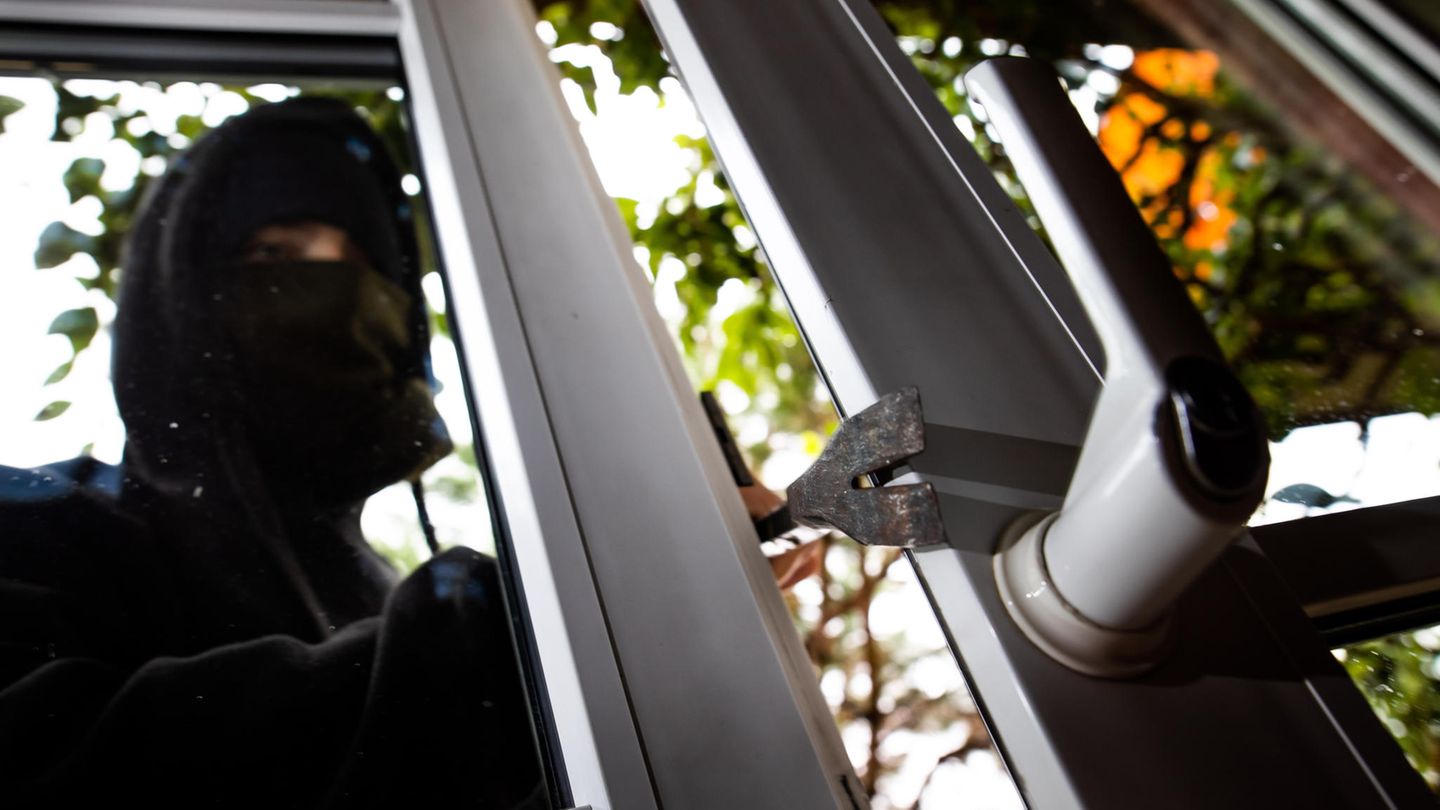Burglars on the way
This is how you protect your house and apartment from break-ins
Copy the current link
The dark winter is time to set in. If you want to return to an intact home after vacation, visiting family or shopping, you should take a few precautions.
The dark season attracts more burglars again. According to the Federal Criminal Police Office, around a quarter more burglaries are reported between September and February than in the summer months. No wonder, after all, criminals feel particularly comfortable in the dark and are more likely to strike again. In 2023, the number of burglaries including attempted burglaries in Germany rose by more than 18 percent. But most of them are opportunist thieves and it is precisely against them that residents can protect their house and apartment well.
Simulate presence
It is extremely unlikely that someone will gain access to the apartment while you are at home. “Burglars usually come when they think that no one is there,” says Carolin Hackemack, managing director of the “Zuhause Sicher” network, an association , which is committed to effective burglary protection. So residents should start right there and make sure that strangers don’t recognize when you’re out of the house. Roller shutters that are drawn down during the day are a clear sign of this, explains the expert. The same applies if the lights are never on.
“To simulate presence, you can control the lights with a smart home system and turn the lights on in one room and off in another in the evening,” says Hackemack. If you don’t have a smart home system, you can ask your neighbors to regularly raise and lower the shutters in your apartment. This signals to the burglars: the residents are there.
However, if a burglar suspects that no one is in the apartment or house at the moment, many people dare to try. According to the police union, around 80 percent are opportunists who use a tilted window or an unlocked door to gain access. For residents, this means: Even if you are only shopping for a short time, you should close the windows completely and lock the apartment or front door instead of just letting it close behind you. This is not only safer, but also important for an insured event: If you don’t close a window correctly, you risk that the insurer won’t pay. Then insurers can assume that the residents acted negligently, explains Hackemack.
Mechanical help against burglary for windows and doors
However, even closed windows do not deter an experienced burglar. “A simple screwdriver is enough to pry open a window or French window in just a few seconds and almost silently,” says the burglary protection expert. To avoid this, windows with a mushroom head lock help. The expert recommends following the RC-2 category. The police use these classes to classify resistance – the higher the class, the longer it takes to break down a window or door. If you want to be on the safe side, you can also try resistance class RC-3 – but it is correspondingly more expensive.
The important thing is: not everyone needs the same protection. Homeowners with a lot of windows on the ground floor should think about having them retrofitted. However, if you live in an attic apartment, it would be better to invest in an apartment door with pivot bolts or steel pins.
It is still possible to open the specially secured doors or windows. But it takes more time – and that is the decisive factor. “Most break-in attempts last no longer than a few minutes,” explains Hackemack. If burglars notice that the residents have taken precautions, they usually move on and try elsewhere. This is where there has been a positive development in recent decades: almost every second attempt at a break-in now fails.
The right insurance coverage
In addition to mechanical protection, residents should also prepare for the possible consequences of a break-in. This includes, for example, taking out insurance against burglary and theft. “The household contents insurance should match the individual value of the household contents,” explains Hackemack. If you own particularly valuable items, the standard flat rate offered by many insurance companies is not enough. Because in many policies there is a maximum value per square meter that the insurance will reimburse, around 700 euros.
“In addition, there are upper limits for individual areas,” adds the expert. If a resident owns a lot of jewelry, they should check with the insurer to what extent they will cover it. In the best case scenario, residents would have kept a list of their valuables and purchase receipts. If there is no evidence, photos of the possessions could also help in the event of damage. In this way, if the worst comes to the worst, you can prove to the insurance company what damage occurred – at least the financial damage.
Capital
Capital is a partner brand of star. You can access selected content with your star+ See subscription. You can find more from Capital at www.stern.de/capital.
Source: Stern




